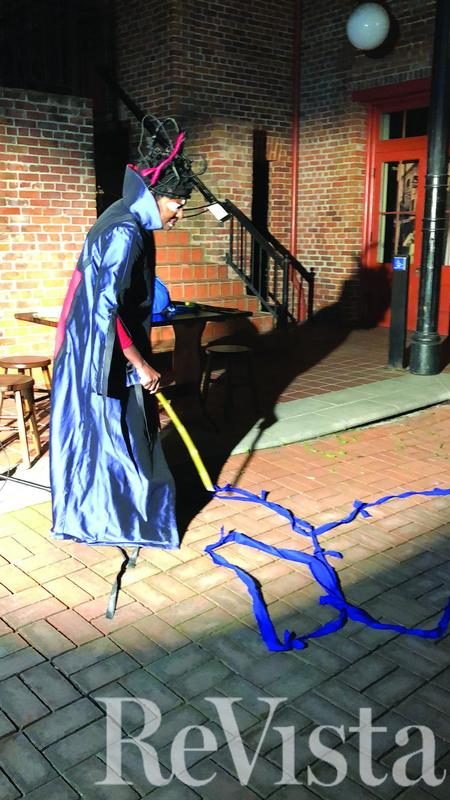This week’s readings dialogue around Zapatismo and its rejection of the “cult of the individual” (“Between Light and Shadow”) for collective resistance before the annihilating violences that structure our world today. Importantly, the Zapatista movement’s tactics and strategies offer us apertures through which we can consider the making of alternative worlds. In “Between Light and Shadow,” Subcomandante Marcos declares that, recognizing that “our dilemma was not between negotiating and fighting, but between dying and living,” the movement made a choice for more life: rather than adopting the logics of war, the Zapatistas built infrastructure around education and health, improving living conditions and creating autonomy: “Instead of fighting for a place in the Parthenon of individualized deaths of those from below, we chose to construct life.” Judith Butler has argued that precarity reveals “social [bonds] that [have] been cut or destroyed in a way that seeks to deny a shared precariousness” (“Precarity Talk” 169), that is, the disappearance of the welfare state and its replacement by the State that perceives certain populations as disposable, for example. Faced with the annihilating force of neoliberalism and targeted violence, the Zapatistas’ choice has, within it, a movement away from the individual in order to do the work that actively considers the “conditions of life that variably sustain life, and those conditions [as] pervasively social, establishing…the interdependency of persons” (Butler, Frames of War 19) (although this action is not exclusive to the choice, but inherent in their world-view).
It is our conviction and our practice that in order to rebel and to struggle, neither leaders nor bosses nor messiahs nor saviors are necessary. To struggle, one only needs a sense of shame, a bit of dignity, and a lot of organization. As for the rest, it either serves the collective or it doesn’t.
-Subcomandante Marcos
This communitarian world is one possibility of alternative world-making that the Zapatistas offer us. It is interrelated with the possibilities that Taylor’s text on the “Death of a Political ‘I’” brings, both through the performance of Marcos as multiple identities, “a colorful ruse,” a “hologram,” and his “death” (in quotations because as Taylor aptly observes, “narrative…outlives its author”), which performed the shift to a “new phase of struggle” in which leader figures were no longer necessary: “that’s why they told me that when I was reborn, it would be as a collective” (“Between Light and Shadow”). Perhaps motivated by Jill Lane’s text, I am interested in the holographic nature of the figure of Marcos and how it manifests itself materially. Taylor highlights its “potential of indeterminacy…always a collective—never a singular ‘I’.” One the one hand, considering its status as between light and shadow, the hologram here is material and opaque—I wonder how this distraction and its lack of transparency, a “marvelous magic trick” (“Between Light and Shadow”) operates within the concept of “indigenous technology” proposed in this week’s readings. On the other hand, the diffusiveness of Marcos brings to mind another reading of Lane’s proposal of simulation and embodiment as spatial practice (131).
Another possibility emerges in Lane’s piece and Taylor’s interview with Ricardo Dominguez: the use of digital technology, cyberspace in particular, to find “different [lines] of flight” (Lane 129). In the Dominguez interview, he recounts how digital Zapatismo was able to take up the tactic of “electronic disturbance,” using hacking and other interventions to enact “electronic civil disobedience.” In this way, the Zapatistas were revolutionary in being able to intervene digitally while operating outside of its infrastructure (Dominguez), “ripping in” in succession towards the formation of communities –networks– that could work together to reconfigure systems of power; “In the same way they ripped into [it], I was ripping into the space they had created. That aura was that somehow there could be a possibility of interconnecting real bodies embedded outside of the grid as a direct manifestation of the ethics and aesthetics of how networks and tactical media should really respond” (Dominguez)– is this not a manifestation of how Lane argues that cyberspace can be understood as “a form of spatiality produced by material practices…and at the same time, produced by the social relations” (131)?. Dominguez’s discussion of “electronic disturbance theater” as an aesthetic process is also significant in its reading of the word “technology” apart from progressive notions of futurism; Dominguez’s interpretation of digital Zapatismo as “not bound to technology, not bound to a specific sort of instantiation, but to a poetics” is illuminating in not only showing how this electronic disobedience dislocated the definitions of cyberwar, cyberterrorism, and cybercrime (Dominguez), but also, in the case of the poetic gestures and interventions, how the aim of the acts were to “shift the conditions of technology away from technology” using the poetic voice. That is to say, there was a movement away from a concept of network power as being bound to technology (although, as Lane argues, EDT protests also staked important claims around the public nature of cyberspace), and towards the usage of poetics to create different narratives that before seemed impossible in the face of savage neoliberalism (Dominguez).




